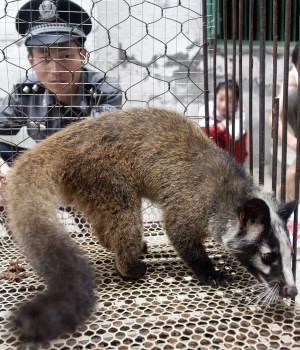
Today, more than 60 percent of new emerging human infectious diseases reach us via animals, scientists say.
Even poultry and cattle can surprise us with dangerous diseases like bird flu or mad-cow disease.
“For the sake of these wild species’ future, and for human health, we need to reduce consumption of these wild animals,” said Diana Bell, a wildlife disease and conservation biologist at University of East Anglia who has studied SARS, Ebola and other pathogens.
Wild-meat consumption itself is not necessarily dangerous, as most viruses die once their host is killed.
But pathogens can jump to humans during the capture, transportation, or slaughter of animals, especially if sanitation is poor or protective equipment not used.
Chinese authorities have addressed the problem partly by encouraging a farmed-animal industry.
This has included for endangered species like tigers, whose parts are prized in China and other Asian countries as aphrodisiacs or for other uses.
Environmental groups say Chinese demand, fueled by rising consumer buying power, is the biggest driver of the global bush-meat trade today.
Yang Zhanqiu, a pathogen biologist at Wuhan University, said modern demand also is bolstered by widespread distrust of a Chinese food industry tarnished by years of repeated safety scandals.
“People will think: wild is natural, natural is safe,” Yang said. “Everyone wants to eat better, so there is a market for wild animals.”
“It’s very difficult to stop an activity with 5,000 years of cultural significance.” said Peter Daszak, president of EcoHealth Alliance, a global NGO focused on infectious disease prevention
“The problem is that we live in such an interconnected world today that any pandemic like this can spread globally in three weeks.”









































